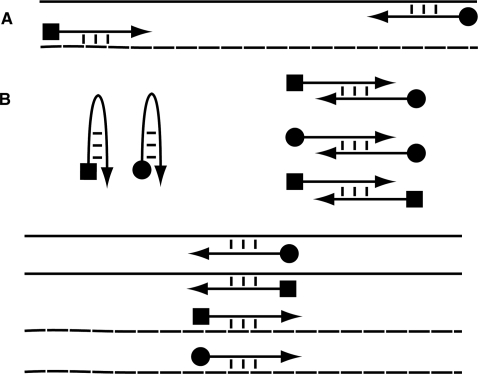Figure 1.
Species accounted for in primer feasibility analysis. The solid line is the top strand of the template;the dashed line is the bottom strand of the template; the arrow with the square end is the left primer; the arrow with the round end is the right primer; three dashed lines indicate binding (or folding) via hydrogen bonding. (A) Desired binding interactions. High rates of binding are desired between the primers and the template priming regions. (B) Undesired binding and folding reactions. Primers should not fold, dimerize or bind to the target outside of the priming regions.

